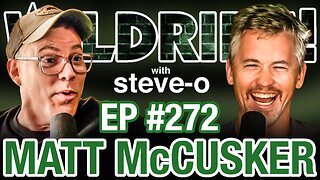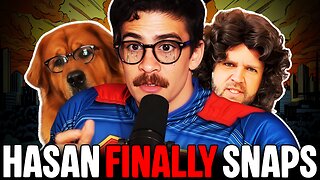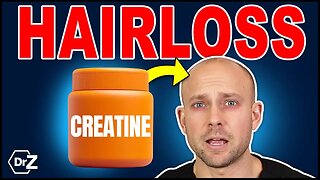Premium Only Content

Introduction to the Footprint - Session IV - The Pit Futures Trading
#daytrading #orderflow #footprint
With five years of training Traders in The Pit Discord Group I estimate that 90% of the people have found a Footprint chart to be confusing and difficult to understand. Once understood most Traders have realized the value that a Footprint chart holds.
Footprint charts can also be called Numbers Bars or Delta Footprint Bars but for use in The Pit we will use the term Footprint. This style bar can be selected by time i.e., 60Min, 30Min and/or variants like 2500 contracts-volume per bar.
With our daily plan completed we start to step down our timeframe from longer daily charts to intraday timeframes. This is where I start to make trading execution decisions.
- Point to remember: The higher timeframe always takes priority. This is the sole reason our planning takes place on a longer timeframe.
The chart below shows Footprint bars. The left side of the bar are trades that have occurred at the Bid and the right side shows trades at the Ask/ Offer.
I use a 60-minute Footprint chart (20k Trade too) and the previous page shows that chart. Now we want to add in our previous work from our daily planning. Sierra Chart can plot the lines noted in the VbP and MP charts. Now we add the previous day Open, High, Low, Close. Then add the current sessions Open from the GLOBEX session. All of this can be done automatically with Sierra Chart, but I manually place the Previous Day High, Low and Close as well as GLOBEX High and Low and the MP chart.
So, at this point we have built a 60Min chart displaying LVNs from the higher timeframe VbP chart, previous days OHLC and GLOBEX Open. That chart should like the one below.
To this point we have carried over LVNs from the VbP charts, areas from the previous trading day’s OHLC and have been market out. The current evening session open is marked.
I now plot a VbP histogram for the current session on the 60Min Footprint chart. This is aligned to the right side. It is based on the current session and its being updated with every trade. Next, I will plot the Bollinger Band indicator on the Footprint. This is plotted based on a 20 period look back with the 2nd and 3rd Standard Deviation outer bands.
Points to be aware of:
I. LVNs, previous OHLC and Evening Open are static reference points. We will lean on these for the first decision points to execution.
II. Price, Bollinger Bands, and Session VbP are dynamic.
We discussed VbP at length previously and the same analysis applies to the VbP on the current 60Min Footprint chart. The focus needs to shift to Bollinger Bands. The Bollinger Bands plot out bands based on volatility of price action. Upper and Lower bands are 2 and 3 standard deviations from the average. The reference basically tells us that 95% of trading activity has occurred below the 2nd standard deviation and 97.5% beneath the 3rd standard deviation. The width of the bands will widen or narrow based on the volatility of price. The bands are a dynamic study.
To this point we have identified static areas and dynamic indicators. Our trade criteria should unfold along the lines of waiting for price to reach one of our static areas and being over extended based on Bollinger Band extremes.
-
 LIVE
LIVE
Pop Culture Crisis
1 hour agoCoca-Cola's WAR ON CHRISTMAS, Movie Press Tour CRINGE, Gen Z HATES Gen Z | Ep, 949
562 watching -
 16:30
16:30
Clintonjaws
17 hours ago $4.31 earned'The View's' Producer Stops Show & Forces Whoopie To Correct Lie
5.43K4 -
 1:10:24
1:10:24
Steve-O's Wild Ride! Podcast
5 days ago $0.38 earnedMatt McCusker Makes Steve-O Nervous | Wild Ride #272
2.84K1 -
 17:09
17:09
Bearing
9 hours agoHasan Goes NUCLEAR On Chat ☢️ ROASTED By JD Vance Over Dog Allegations 🚨
6.86K27 -
 LIVE
LIVE
The HotSeat With Todd Spears
1 hour agoEP 203: The Military "Whistleblower"
647 watching -
![[Ep 784] Election 2025: NYC is Screwed | Tatum Calls Out Kirk Conspiracists | Guest: Sam Anthony](https://1a-1791.com/video/fwe2/00/s8/1/U/Q/E/w/UQEwz.0kob-small-Ep-784-Election-2025-NYC-is.jpg) LIVE
LIVE
The Nunn Report - w/ Dan Nunn
1 hour ago[Ep 784] Election 2025: NYC is Screwed | Tatum Calls Out Kirk Conspiracists | Guest: Sam Anthony
142 watching -
 1:22:54
1:22:54
DeVory Darkins
4 hours agoTrump makes shocking announcement as Major ELECTION UPDATE drops after bomb threat
81.7K48 -
 10:11
10:11
Dr. Nick Zyrowski
8 days agoDoes Creatine CAUSE Hair Loss? (We All Got This Wrong)
6.85K2 -
 1:09:24
1:09:24
Timcast
4 hours agoZohran Mamdani BLAMES Trump Over Bomb Threats At Polling Locations
149K100 -
 3:09:52
3:09:52
Right Side Broadcasting Network
6 hours agoLIVE REPLAY: White House Press Secretary Karoline Leavitt Holds a Press Briefing - 11/4/25
69.8K14